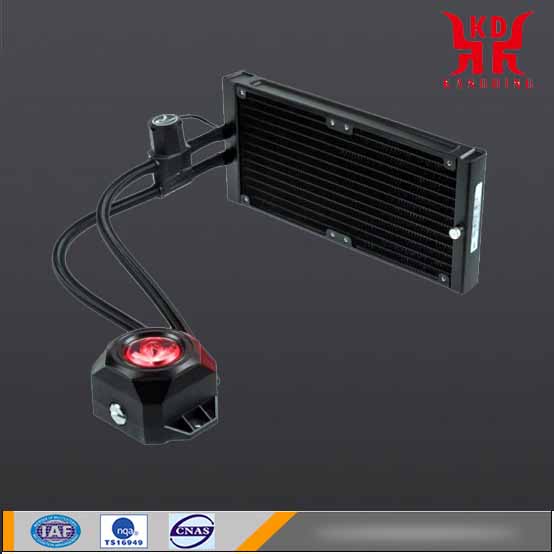LED lighting, due to its remarkable energy saving, is considered to be the next generation lighting technology. LED is a cold light source, and its spectrum does not include infrared light. The current LED luminous efficiency only reaches 20%, which means that more than 80% of the electrical energy is converted into heat. If the heat cannot be dissipated effectively, the temperature of the chip will rise, which will cause the light efficiency to decrease, the light attenuation will increase, and the chip will be burned in severe cases. The heat dissipation of LED chips is an unsolved problem in the current development of LED lighting.
The heat dissipation process of the LED chip is not complicated. It's just a series of heat transfer processes plus convection heat transfer process, the temperature range is not high, it belongs to normal temperature heat transfer. The internal heat conduction process can use computer-specific software to solve the three-dimensional thermal conduction differential equation, calculate and analyze the heat conduction process in the LED chip, the heat sink, and the convective heat transfer on the surface of the heat sink. Analyze where is the main thermal resistance during the entire heat transfer process and what causes it, and a very clear solution can be obtained.
However, the current LED heat dissipation and the heat dissipation of similar semiconductor chips lack this basic and guiding research. Even if someone does it, it is not known to everyone. As a result, the current LED heat dissipation technology uses heat pipes, and even proposes to use loop heat pipes. This article only studies and analyzes the impact on heat dissipation from the different distribution of LED chips, which will play a guiding role in the design and manufacture of LED chips.
1. Calculation and simulation model

figure 1
As shown in Figure 1, there are 9 1&TImes on one side of the aluminum heat sink; 1mm, 1w chip, and 0.1mm thick insulating and thermal conductivity layer with a thermal conductivity of 4w/ (m·k); The total area of the ribs is m2; The air convection heat transfer coefficient is =6 w/(m2•k); The thermal conductivity of aluminum is 202 w/(m•k). In order to simplify the calculation, the heat conduction problem in the fins is not considered, and the heat dissipation surface of the fins is simplified and converted into 65&TImes; 65mm, the convection heat transfer surface with a convective heat transfer coefficient of 85 w/(m2•k). That is to solve the problem that one side is the convective heat transfer surface (=85w/(m2•k)) and the other side is an aluminum block (65×65×3mm) with 9 chips (1×1mm, 1w) when the chip spacing is different The temperature field inside.
result
Solve the equation:

is: the three-dimensional steady-state thermal conductivity differential equation, usually called the Laplace equation. Solve with special calculation software.
2, calculation result
Figure 2 shows the temperature distribution across the center point of the metal surface of the heat sink where the LED chip is located at different chip pitches.

The chip spacing L is: 1mm, 2.5mm, 5mm, 7.5mm, 10mm, 15mm, 20mm, 25mm, 30mm.
When L=1mm, that is, 9PCS LED chips are grouped together without gaps between them.
Table 1, lists different chip spacing, the temperature value and the difference between the center point of the metal surface of the heat sink where the LED chip is located (that is, the highest temperature point). In the above calculation, the ambient temperature is 40°C (313K).

3. Analysis
It can be clearly seen from Figure 2 and Table 1:
When 9PCS LED chips are grouped together (chip spacing L=1mm), the center point (the highest temperature point where the chip is located) has the highest temperature, that is, the worst heat dissipation effect.
When the chip pitch increases by 1.5mm (L=2.5mm), the highest point temperature drops by 3.1°C.
When the chip spacing increases by 4mm (L=5mm), the highest point temperature drops by 4.8°C. When the chip spacing is L=7.5mm, the highest point temperature drops by 5.6°C.
When the chip pitch L=10mm, the temperature drops by 6.1℃.
When the chip pitch L=20mm, the temperature drops by 7.2°C. The temperature drops significantly in the distance L=10mm.
4. Results
(1) The distribution of LED chips has a great influence on heat dissipation, and the LED chips should be dispersed.
(2) For 1×1mm, 1w LED chips, the chip spacing is preferably 5~10mm.








